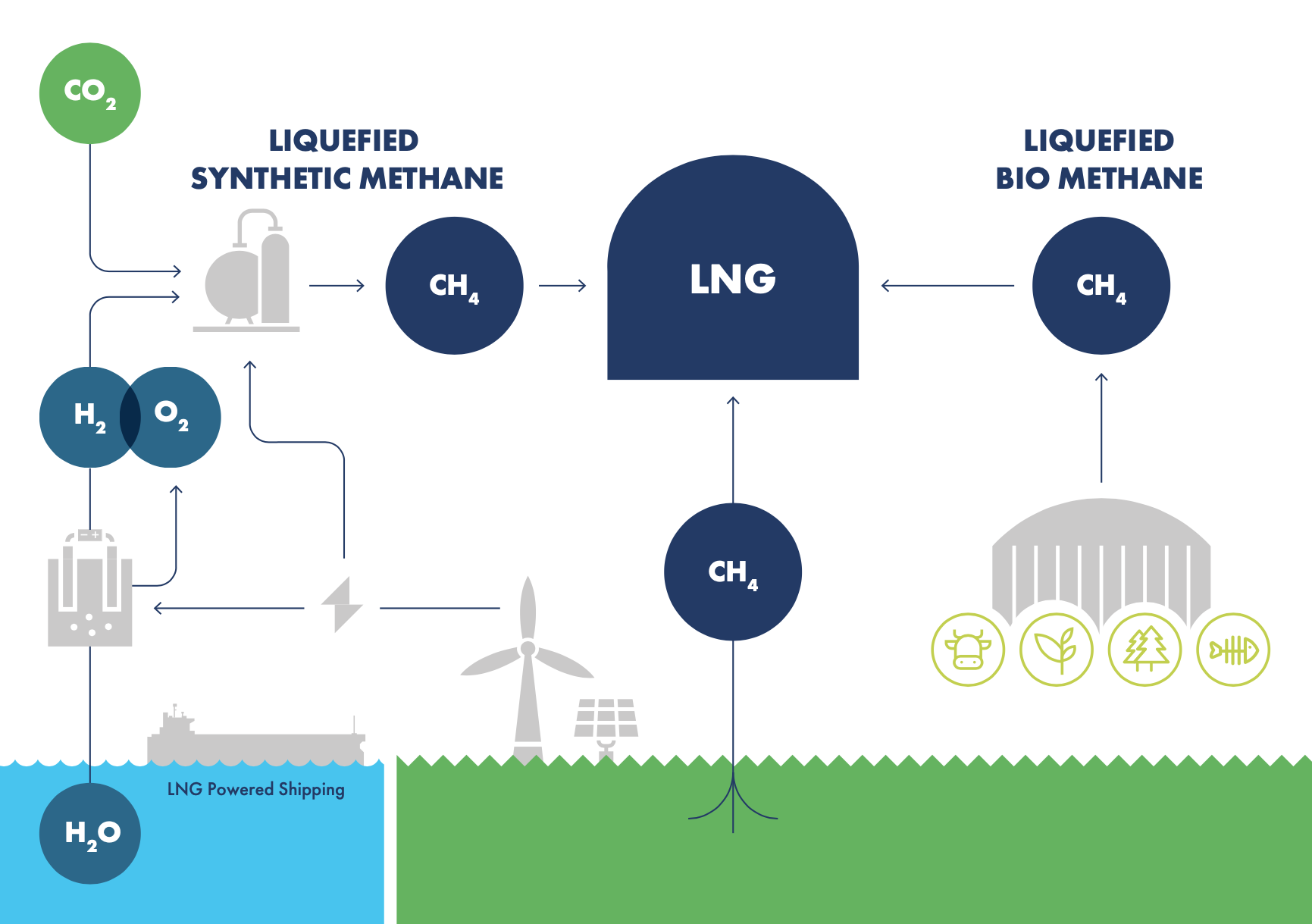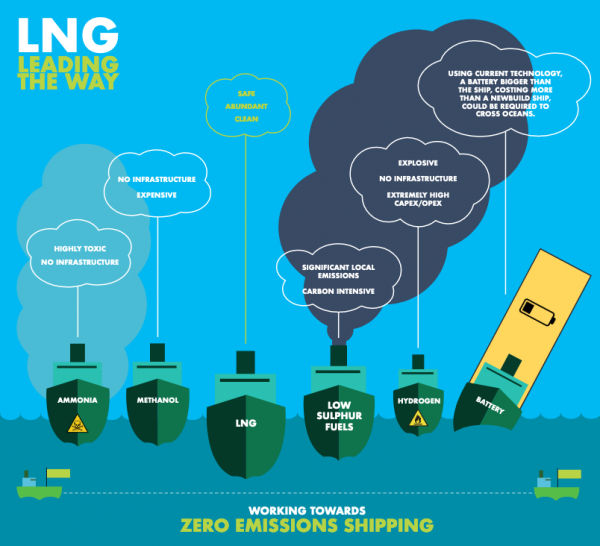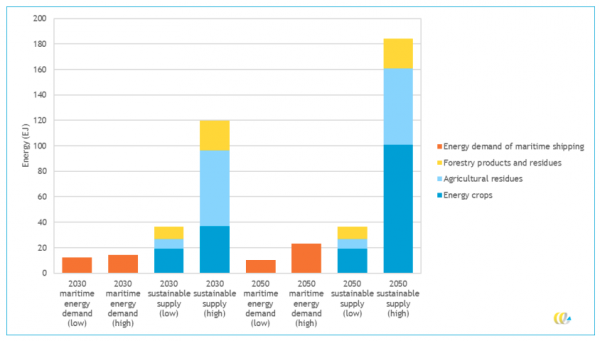Decarbonisation
LNG offers a decarbonisation pathway for the global shipping industry now.
By investing in LNG-fuelled vessels now, ship owners can realise immediate GHG benefits – up to 28% on a Tank-to-Wake basis, including the impact of methane emissions.
In combination with efficiency measures being developed for new ships in response to the IMO’s Energy Efficiency Design Index (EEDI), LNG provides a way to meet the IMO’s decarbonisation target of a 40% decrease by 2030 for international shipping.
Longer term LNG offers a decarbonisation pathway for shipping to become carbon neutral through the use of liquefied biomethane (LBM) produced from biomass and liquefied synthetic methane, (LSM) produced from renewable electricity.
LBM and LSM are scalable solutions for the maritime sector, with estimated sustainable global supplies potentially exceeding the demands of shipping in the future, and likely to be commercially competitive relative to other low- and zero-carbon fuels. Further, the growing LNG-fuelled fleet could use LBM or LSM without requiring major modifications, and the existing supply infrastructure will remain fit for bunkering purposes with either fuel.
In contrast to other alternative fuels such as renewable hydrogen and ammonia, LNG is operationally proven, commercially viable, available and scalable now.

Comparison of Alternative Marine Fuels
17th September 2019
Environmental regulations controlling emissions of SOx, NOx and Greenhouse Gases (GHG) are transforming the global shipping industry. Carbon-intensive, polluting heavy fuel oil (HFO) can no longer remain the default option for ocean voyages.

Availability and costs of liquefied bio- and synthetic methane – the maritime shipping perspective
26th March 2020
The shipping industry faces unprecedented challenges if it is to meet the IMO’s decarbonisation targets.

